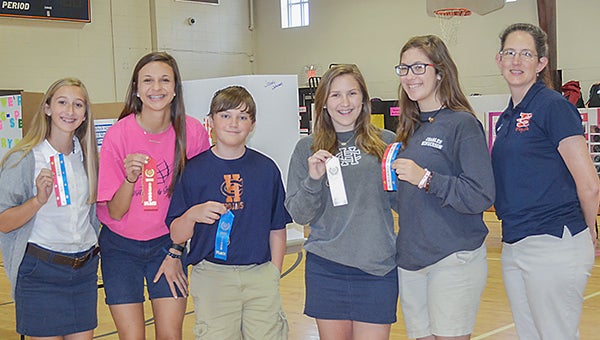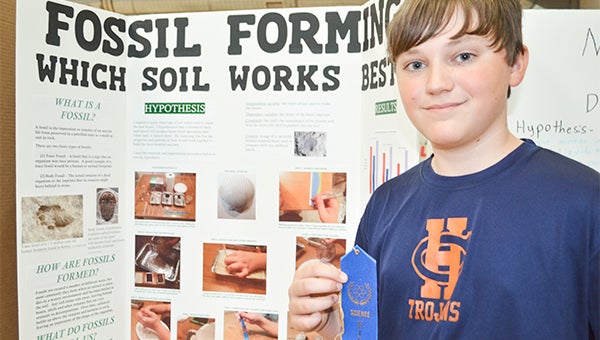MAD SCIENCE: CHMS participate in school’s annual science fair
Published 3:00 am Saturday, April 30, 2016
Jaxen Lunsford was named the winner of the 2016 Charles Henderson Middle School Science Fair with his hypothesis of which soil works best for fossil forming.
Sydney Watson took second place honors and Anna Schrieber was awarded third.
Emily Walker and Hannah Huner received honorable mention recognition.
The CHMS Science Fair winners had an opportunity to shine at the annual science fair at the school this week along with the other participants.
Each year, Amanda Challancin, eighth grade advanced science teacher, gives her students the opportunity to choose a science project that is of special interest to them for competition in the science fair.
“The students choose a problem or question that can be answered by experimentation,” Challancin said. “They state their hypothesis and predict what the outcome will be. At the science fair they display records of their observations and give the results of the problem or question they chose.”
At the CHMS Science Fair, the students displayed their science fair projects and were also available to explain their projects and how they came to their conclusions.

Pictured below, the CHMS Science Fair winners were congratulated by their teacher Amanda Challancin at the 2016 eighth grade science fair this week. Pictured from left, are Hanna Huner, Sydney Watson, Jaxen Lunsford, Anna Schrieber, Emily Walker and Challancin.
Challancin said the students explored a wide range of interests and worked hard to come to concrete conclusions.
Jaxen said he wanted to know what type of soil nature uses to create the best fossils.
“I hypothesized that a mixture of sand and topsoil would produce better fossils specimens than sand or topsoil alone,” he said. “I thought that the properties and qualities of both would work together to build the most detailed outcome.”
Jaxen made plaster casts to determine the outcome of the experiment.
“The sand, much like a sandcastle, crumbled around the edges and the topsoil had lot of foreign particles in it and was too moist and spongy,” he said. “The sand and topsoil mixed produced the most defined cast texture and yielded the most visible ridges.”
Sydney wanted to know whether gum helps students focus.
“I gave five students a subtraction test and all five of them worked faster when they chewed gum,” Sydney said. “When they didn’t chew, they missed some of the problems but, when they chewed, they got all of the problems correct. So chewing gum does help you focus.”
Anna Schrieber’s Electrolyte Challenge determined which type of drink produced the most electrolytes. She wrapped a wire around a straw and connected the wire to a millimeter. She put the straw in a bowl containing a drink and got the microamps and milliamps and converted them to amps to get the amount of electrolytes.”
“I tested water, cola and orange juice and found that orange juice has the most electrolytes so it is the best drink for you,” Anna said.
Hannah wanted to know which personal drink cooler or cup was the “coolest.”
She placed the same amount of beverage at the same temperature in four different cooler cups and found that the HHG cup kept the beverage cooler longer than other cups including a Yeti.
Emily’s question was whether music aids basketball players in shooting free shots.
She tested five subjects and only one of them was more successful at playing “string music” with music playing.
“When they were listening to music, they didn’t concentrate as well,” she said.
Challancin said the science fair was a learning experience for all of those who participated and congratulated them on a job well done.




